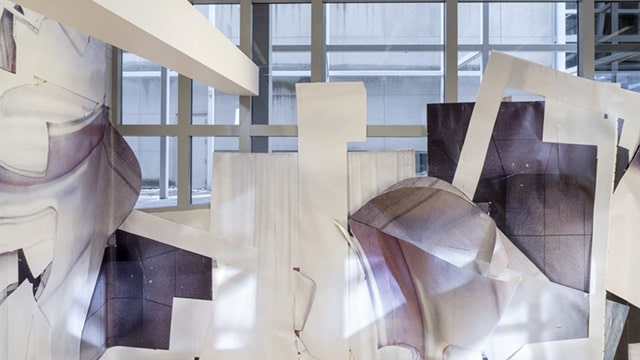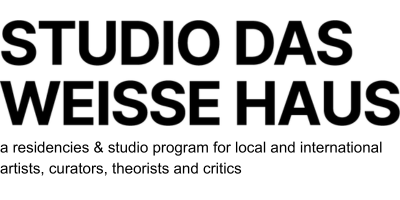Weekly Conversations... with Anita Witek

For our weekly conversation, I would like to introduce Anita Witek, one of our Studio Artists who will tell us more about her solo-exhibition at the Wexner Center for the Arts, Ohio, USA.
Your work often shows a collaboration of found images and the act of elision. How are you combining these two parameters in the exhibition ”Clip”?
As when I’m doing site specific work I often use material that is directly connected to the program of the exhibition space. For example I use their posters that had advertised former shows, deconstruct them in a way to then create a visual dialog between the given architectural space of the institution with its intellectual space / space of content.
For the installation at the Wexner Center I wanted to stay removed from the direct exhibition history of the institution, because I wanted to focus on the aspect that the space I was going to make my work for was a collage in itself. So I went into my own clippings archive and started looking for printed material that loosely dated back to the times when this building was conceived, in the 1980ies. I then decided to reuse bits and pieces from former montages of my own work, adapt their shapes and sizes and rearrange them in a manner that they would start interacting with the architecture as much as with the perception of the viewer. So what I applied onto the building was material that had till then only existed in 2 dimensional form in my photographs.
If you look closely at previous photo series of mine, like “Die Reise der Fotografin”, “Best of”, or “NotitzenzuAminadab” you will clearly recognize fragments that are now large parts collaged onto the walls of the building.
Has it been difficult for you to adopt the shape and the architecture of the lower lobby in the building?
It was a challenge to imagine and understand the space and what it means for its users on a daily basis, purely from a theoretical introduction to it. I had never visited the building in person before I started working on ‘Clip’. At the same time there was great support and a lot of exchange with the curator Lucy Zimmerman, as well as the Wexner team over several months. I had a 3D model in my studio, so it was very exciting to mentally dive into that complex space and work with and on its rigorous structure. So the real question to me came up when I arrived there for installing the piece: How would the architecture adopt my shapes?
My first association with your installation is metal. Which materials and surfaces had influenced you in composing this installation?
Allocation and segmentation of space, which views on to a space exist, which dominate, what stays blocked out, what can be added, what can be changed, what changes our perception of a space are the questions that I m generally interested in. Eisenmans architecture is dealing with similar issues but using concrete, steele, brick, etc. I am working with photography and paper. So I would not say I was influenced by any material as such, but rather by the atmosphere of the building as I imagined it.
Interviewer for studio das weisse haus: Florian Appelt
